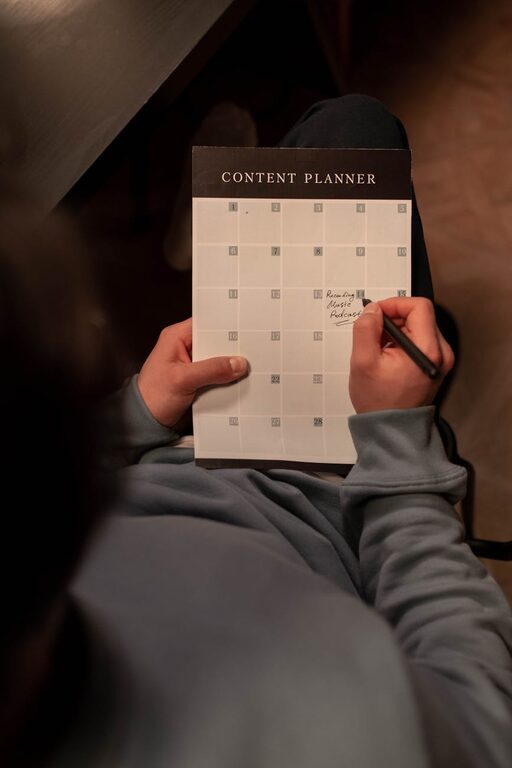Creating a weekly reset routine is a powerful way to clear your mind, organize your space, and set yourself up for success in the coming days. Whether your week has been hectic or smooth, taking intentional time to reset can improve your focus, reduce stress, and boost your overall well-being.
In this post, we’ll explore how to design a personalized weekly reset routine that fits your lifestyle and goals. From scheduling the right time to choosing activities that refresh you, these tips will help you create a habit that keeps you balanced and motivated.
What is a Weekly Reset Routine?
A weekly reset routine is a deliberate set of actions performed once a week to help you recharge mentally, physically, and emotionally. Think of it as hitting the refresh button — reviewing your past week, organizing your environment, and planning ahead for the next.
Unlike daily routines that focus on small, day-to-day tasks, a weekly reset involves more comprehensive activities aimed at restoring your energy and clarity.
Why You Should Have a Weekly Reset Routine
– Reduce burnout: Taking time to rest and reset prevents fatigue.
– Boost productivity: Planning ahead makes the week smoother.
– Improve organization: Tidying your space helps clear your mind.
– Enhance self-awareness: Reflecting on your week uncovers patterns.
– Create balance: Prioritize self-care alongside responsibilities.
Step 1: Choose the Best Time for Your Weekly Reset
Selecting a consistent day and time for your reset routine is key to forming a lasting habit. Many people choose Sunday evening or Monday morning to prepare for the week ahead. However, your ideal time depends on your schedule and when you feel most relaxed.
Tips for selecting your reset time:
– Pick a time when you’re least likely to be interrupted.
– Avoid times when you feel tired or stressed.
– Block out 30 minutes to 1 hour—adjust as needed.
Step 2: Prepare Your Environment
A neat, inviting space supports focus and calm. Before you begin your reset, create a comfortable setting.
Try these quick environment tips:
– Clear your workspace or living area.
– Gather any tools you’ll need like a journal, planner, or phone.
– Put on calming music or light a candle if it helps you relax.
Step 3: Reflect on the Past Week
Reflection is an important part of resetting. Take a moment to think about your accomplishments, challenges, and what you want to improve.
Questions to consider:
– What went well this week?
– What tasks were left unfinished, and why?
– How did you take care of yourself?
– Were there any moments you felt particularly stressed or happy?
Journaling your responses or discussing them with a friend adds clarity.
Step 4: Tackle Organizing and Cleaning
Physical clutter can lead to mental clutter. Use your reset time to straighten up and organize. This doesn’t have to be an exhaustive cleaning session — focus on spots that affect you most.
Common areas to tidy:
– Your desk or work area.
– Mail and paperwork.
– Digital space: inbox, files, or apps.
– Personal items like clothes or workout gear.
Breaking tasks into small chunks keeps the effort manageable.
Step 5: Plan Your Week Ahead
Planning brings direction and reduces anxiety about what’s to come. Use your reset time to outline your priorities and schedule.
How to plan effectively:
– List your top 3–5 goals for the week.
– Schedule appointments or deadlines in a calendar.
– Block time for self-care and breaks.
– Prepare meals or outfits if that simplifies your routine.
Reviewing your calendar also helps identify potential conflicts early.
Step 6: Include a Self-Care Activity
Self-care is essential in any reset routine. Choose an activity that recharges you emotionally or physically.
Ideas for self-care during your reset:
– Meditation or deep breathing exercises.
– A short walk or light stretching.
– Reading a book or listening to a podcast.
– Enjoying a favorite hobby or craft.
Prioritize activities that genuinely relax and energize you.
Step 7: Set Intentions and Affirmations
End your reset with positive intentions to guide your thoughts and actions for the week.
Try these techniques:
– Write down a personal mantra or affirmation.
– Visualize success or calm in your coming days.
– State what you want to focus on, like patience or creativity.
Setting intentions keeps your mindset aligned with your goals.
Tips for Making Your Weekly Reset Routine Stick
– Start small: Begin with 15–30 minutes and build up time.
– Be flexible: Adjust your routine as your needs change.
– Use reminders: Set alarms or calendar alerts.
– Avoid perfectionism: The goal is progress, not perfection.
– Celebrate wins: Acknowledge when your reset helps improve your week.
Example Weekly Reset Routine Template
Here’s a sample outline you can customize:
- **10 minutes:** Reflect on the past week, jot down thoughts.
- **15 minutes:** Organize one area of your home or digital files.
- **20 minutes:** Plan your week, set calendar events.
- **10 minutes:** Do a self-care activity.
- **5 minutes:** Write intentions or affirmations.
Final Thoughts
Designing a weekly reset routine is a simple yet effective way to maintain balance and productivity. By giving yourself dedicated time each week to reflect, organize, and plan, you create space for growth and well-being. Experiment with different activities until you find a flow that feels right and enjoy the benefits of a fresh start every week.


